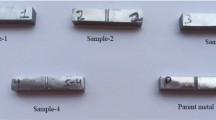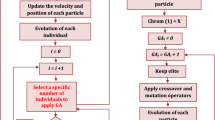Abstract
Maraging steel is a special alloy exhibiting excellent combination of ultra-high strength with considerable ductility. Thus, such steel become significant worldwide for strategic sectors (like nuclear, aerospace and defence) where stringent quality standards with respect to chemistry and properties is compulsory. Manufacturing of these steel is extremely difficult, and vacuum induction melting (VIM) furnace plays most significant part as a primary melting unit. There are a large number of processing parameters to manufacture these special alloys and on top of that, these type of vacuum furnaces are connected with various valves, motors, sensors along with safety systems, which lead to involvement of additional interdependent process variables. Accordingly, building logical agent is often difficult because the developer requires possessing the complete and intricate knowledge of all the agents, which is viable only for deterministic environment. In case of nonlinear condition, the data generation and collection in digital form is a very useful resource of valuable information for meaningful process optimization-related investigation by developing intelligent model from databases. In this perspective, data-driven optimization using evolutionary algorithms is effective tool in order to optimize parameters related to melting time of manufacturing maraging steel through critical analysis of the data. Data of 130 heats collected from VIM 6.5 Tonne furnace and the considered parameters are weight of carbon added, leak rate of system, complete meltdown time, carbon–oxygen–nitrogen pct in opening sample, carbon–oxygen–nitrogen pct in final stages of melting, refining time, leak rate during melting, tapping temperature, melt duration and tap to start time between previous and present melting and lining life. Out of aforementioned fifteen parameters, minimization of refining time and melt duration is the objectives of the present investigation. Evolutionary neural network has been used as a primary optimization algorithm for present investigation which is coupled with predator–prey genetic algorithm (PPGA). Optimization using PPGA has been achieved successfully and obtained the trade-off between refining time and melt duration. The analyses of all input parameters reveal that the complete meltdown time and carbon addition at start are the two main parameters which can affect the melting and refining time greatly. Putting extra care on these two parameters will greatly affect the melting time of maraging steel in VIM furnace.






Similar content being viewed by others
References
Rao M, and Sivasubramanian K, Mater Sci Appl 2 (2011) 1116. https://doi.org/10.4236/msa.2011.28150
Rao M N, Trans Indian Inst Met 63 (2010) 321. https://doi.org/10.1007/s12666-010-0043-8.
Psioda J, and Low Jr J, NASA CR-135288 (1977). https://ntrs.nasa.gov/archive/nasa/casi.ntrs.nasa.gpv/19780008207.
Würzinger P, Rabitsch R, and Meyer W, J Mater Sci 39 (2004) 7295. https://doi.org/10.1023/B:JMSC.0000048744.03279.ec.
Brown E, Stulga J, Jennings L, and Salkeld R, in Fourth International Symposium on Superalloys (Superalloys 1980), Champion, PA (1980).
Guo Z, and Sha W, Comput Mater Sci 29 (2004) 12. https://doi.org/10.1016/S0927-0256(03)00092-2.
Schnitzer R, Zinner S, and Leitner H, Scr Mater 62 (2010) 286. https://doi.org/10.1016/j.scriptamat.2009.11.020.
Pardal J M, Tavares S S M, Terra V F, Da Silva M R, Dos Santos D R, J Alloys Compd 393 (2005) 109. https://doi.org/10.1016/j.jallcom.2004.09.049.
Pal S, and Halder C, Steel Res Int 88 (2017) 1600193. https://doi.org/10.1002/srin.201600193.
Bhattacharyya D, Padhee P R, and Das P K, Steel Res Int (2018). https://doi.org/10.1002/srin.201800095.
Pal S, Behera K K, Padhee P R, and Sarkar S, Steel Res Int (2019). https://doi.org/10.1002/srin.201800506.
Sahu R K, Halder C, and Sen P K, Steel Res Int (2016). https://doi.org/10.1002/srin.201500312.
Deb K, Multi-objective Optimization by Evolutionary Algorithms (2001). https://www.egr.msu.edu/~kdeb/papers/k2011003.
Chakraborti N, Inform Mater Sci Eng (2013). https://doi.org/10.1016/B978-0-12-394399-6.00005-9.
Akaike H, IEEE Trans Autom Control 19 (1974) 716. https://doi.org/10.1109/TAC.1974.1100705.
Chakraborti N, Saxén H, and Mitra T, Evol Comput (2016). https://doi.org/10.4324/9781315366388-13.
Pettersson F, Chakraborti N, and Saxén H, Appl Soft Comput 7 (2007) 387. https://doi.org/10.1016/j.asoc.2005.09.001.
Yang Z, Yan J, and Lu Q, American Society of Mechanical Engineers (2016). https://www.asme.org/wwwasmeorg/media/resourcefiles/events/omae/programataglance2016.
Acknowledgements
Authors would like to acknowledge Melt Shop-III at MIDHANI for their support. Authors would like to acknowledge Github Inc. for providing the EvoNN algorithm.
Author information
Authors and Affiliations
Corresponding author
Additional information
Publisher's Note
Springer Nature remains neutral with regard to jurisdictional claims in published maps and institutional affiliations.
Rights and permissions
About this article
Cite this article
Halder, C., Kuppili, L.P., Dixit, S. et al. Bi-objective Optimization of Maraging Steel Produced by Vacuum Induction Melting Using Evolutionary Algorithms. Trans Indian Inst Met 74, 1193–1201 (2021). https://doi.org/10.1007/s12666-020-02153-x
Received:
Accepted:
Published:
Issue Date:
DOI: https://doi.org/10.1007/s12666-020-02153-x




